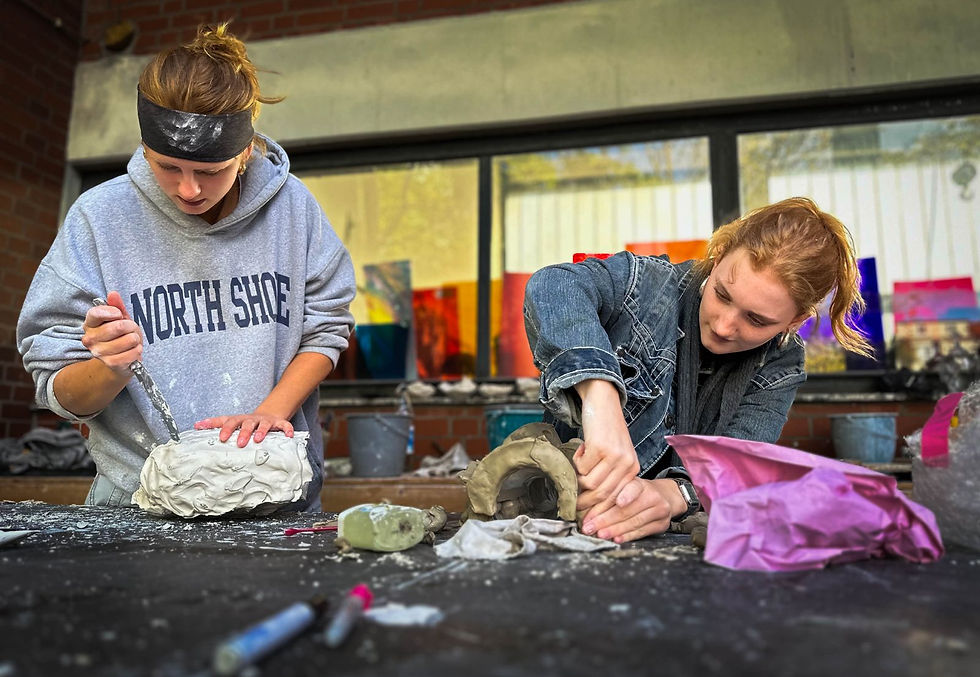Mastering Airflow in Glassblowing: Essential Insights for Artists
- Nadania

- May 21
- 3 min read
Updated: Aug 18
Understanding the Importance of Airflow
One of the most eye-opening lessons I took away from the Pilchuck Furnace Building class was just how critical proper airflow is—especially around the elements. Our new Canned Heat furnaces have a fan at the top of the metal covering, which I thought was enough, but it’s not. Not only should there be a fan – and it can be a lot smaller and off to the side, but there should be a flue with an air-out on the side of the superstructure, AND each element brick should be air cooled, as well!
The Cost of Ignoring Airflow
Fred likes Kanthal elements, which are notoriously expensive. We have been replacing one to three elements per year, assuming that's just how it goes. But according to Fred, that is completely unnecessary. If properly cooled, these elements should last up to ten years. That is a huge difference—and a wake-up call!
Innovative Solutions from Kanthal
Kanthal actually provides an “Air Cooled” anchor system, which is worth looking up on their site. Their design allows cooling air to be blown directly along the terminals, where dust and glass fumes are a constant. It is critical to keep impurities from settling in the passage brick holes. If they do, they will corrode the terminals and possibly jam the element in place—leading to breakage.
Constructing a Functional Flue
At Pilchuck, the flue was constructed from soft brick, with a pre-cast hole in one of the upper wall segments. It will work by allowing air passing through the bored bricks and exited through a hole we cut in the furnace body, allowing the brick structure to protrude out. We added a cap on one side for easy vent cleaning and installed a vertical pipe to direct condensation safely upward.
Retrofitting Our Furnace at Berlin Glassworks
At Berlin Glassworks, we are still figuring out how best to retrofit our furnace, but one thing is certain: we’re boring a temporary hole in the door right away to let that air out. And when time allows for a full repair, we’ll be installing the proper air-cooled anchor system. No more premature element replacements if we can help it!
Embracing the Craft of Glass Art
As we dive deeper into the world of glass art, it’s essential to embrace the nuances of our craft. Understanding airflow is just one piece of the puzzle. Each element in the glassblowing process contributes to the final piece of art we create.
The Journey of Learning
Every lesson learned is a step forward. Whether it’s about airflow, materials, or techniques, we grow as artists by sharing our experiences. I encourage you to explore, ask questions, and never stop learning. The world of glass art is vast and full of possibilities.
Building a Community of Creatives
At Berlin Glas e.V., we aim to be the leading public-access glass studio in Berlin. Our goal is to make the ancient craft of glassblowing and glass art accessible to everyone. We want to foster a vibrant and inclusive creative community. Together, we can explore the beauty of glass art and inspire one another.
Conclusion: The Future of Glass Art
In conclusion, mastering airflow is just the beginning. As we continue to innovate and improve our techniques, we pave the way for future generations of artists. Let’s keep pushing the boundaries of what’s possible in glass art. Together, we can create stunning works that reflect our passion and creativity.
















Comments